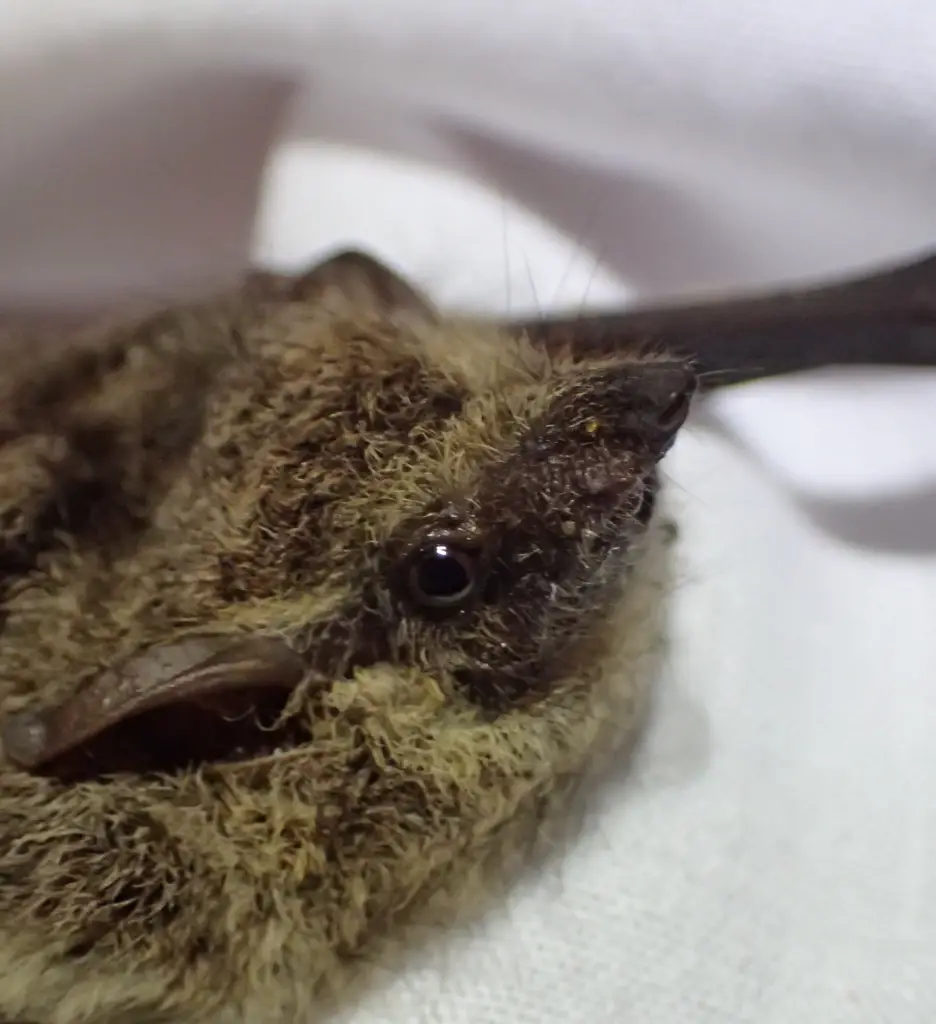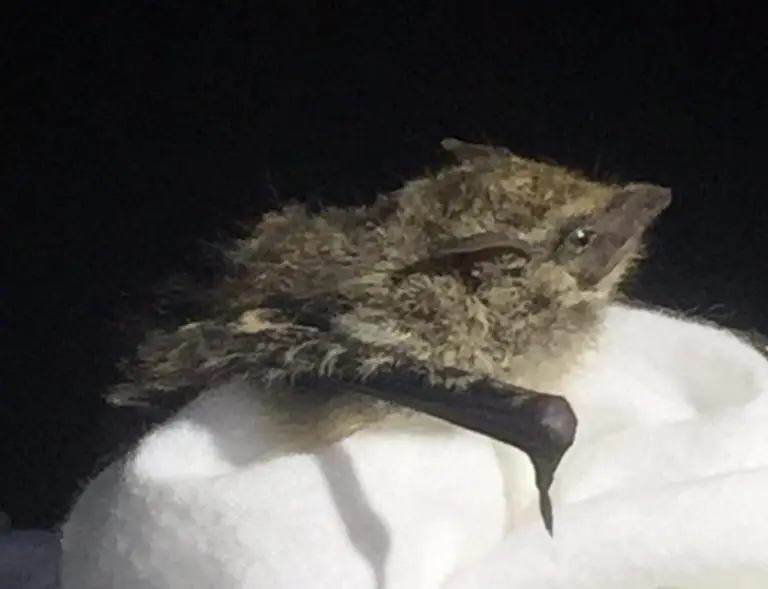Here’s a quirky bat you might not have heard of – the Proboscis Bat!
These tiny grizzled fluffs have one of my favorite scientific names: Rhychonycteris naso. ‘Rhyncho is derived from Greek for beak or snout, while ‘nycteris’ means bat in Greek. The species epithet ‘naso’ is from Latin for nose. So this bat’s scientific name translates to ‘beak snout bat with nose’. Looking at its distinctively elongated and pointy nose, you can imagine why!

Found in Central and South America, these insect-eating bats are often found roosting near bodies of water. Weighing in around 4 grams, they weigh about the same as a dollar bill! They roost in small colonies of between 10 and 40 individuals.
In addition to their unusually shaped noses, they are also easily identified by their shaggy, mottled fur. It is thought that the mottling and stripes on their back and forearms might help them camouflage themselves against tree bark. They are frequently spotted roosting in lines along tree trunks, though they will also roost in man-made structures like under docks.

More about the Proboscis Bat:
- IUCN RedList Account: Lim, B. & Miller, B. 2016. Rhynchonycteris naso. The IUCN Red List of Threatened Species 2016: e.T19714A22010818.
- Mammalian Species: Plumpton, D. L., & Jones, J. K. (1992). Rhynchonycteris naso. Mammalian Species, (413), 1-5.